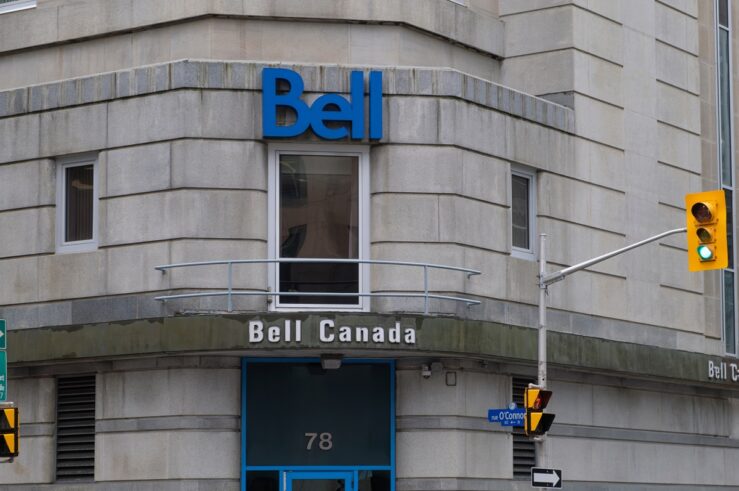If you live outside the farm belt (or you’re not an antitrust junkie) you might have missed what is shaping up to be one of the biggest antitrust stories of the coming year: The set of antitrust accusations and actions against Monsanto for its alleged anticompetitive conduct in the biotech seed market.
The AP reports:
Confidential contracts detailing Monsanto Co.’s business practices reveal how the world’s biggest seed developer is squeezing competitors, controlling smaller seed companies and protecting its dominance over the multibillion-dollar market for genetically altered crops, an Associated Press investigation has found.
With Monsanto’s patented genes being inserted into roughly 95 percent of all soybeans and 80 percent of all corn grown in the U.S., the company also is using its wide reach to control the ability of new biotech firms to get wide distribution for their products, according to a review of several Monsanto licensing agreements and dozens of interviews with seed industry participants, agriculture and legal experts.
Sounds pretty awful. Until you read a bit more and if you, you know, know anything about antitrust law and economics.
Let me say at the outset that I don’t know everything one would want to know about Monsanto’s contracts in order to draw a strong conclusion. But neither does the AP reporter, not that it stopped him from drawing the firm conclusion that Monsanto’s practices are anticompetitive. The only thing lacking from his story is the usually-obligatory quote from the AAI, although the complete absence of any contrary point of view from any source other than Monsanto itself makes up for this omission.
So let’s see. The article frets that:
The company has used the agreements to spread its technology — giving some 200 smaller companies the right to insert Monsanto’s genes in their separate strains of corn and soybean plants. But, the AP found, access to Monsanto’s genes comes at a cost, and with plenty of strings attached.
I should hope so. If Monsanto is giving away its technology and failing to protect its IP it is in serious trouble with its shareholders, among others. And never mind (and the AP reporter doesn’t) that Monsanto apparently licenses its technology broadly (I assume that 200 companies is broad in this market) rather than keeping it locked up for itself (the usual complaint about firms exercising their IP rights). Isn’t this how technology markets are supposed to work?
The article goes on to quote an economist complaining that big is bad (“This level [90%] of control is almost unbelievable”), note that the DOJ is investigating, and note that a suit against Monsanto was “settled with an agreement” (I think with the implication that only the guilty settle cases, but I could just be reading that in . . .).
Moreover, the stakes are huge:
At issue is how much power one company can have over seeds, the foundation of the world’s food supply. Without stiff competition, Monsanto could raise its seed prices at will, which in turn could raise the cost of everything from animal feed to wheat bread and cookies.
Never mind that even without Monsanto’s seed traits we’d still have soybeans and corn. Even this article goes on to explain that “the benefit of Monsanto’s technology for farmers has been undeniable (followed by a “but . . .”)–and that these robust seeds wouldn’t exist at all were it not for Monsanto’s investment in the R&D that created them–a massive investment and effective licensing effort that, according to the article, propelled Monsanto from being a non-entity to being a giant player in the industry in only a few years:
First came the science, when Monsanto in 1996 introduced the world’s first commercial strain of genetically engineered soybeans. The Roundup Ready plants were resistant to the herbicide, allowing farmers to spray Roundup whenever they wanted rather than wait until the soybeans had grown enough to withstand the chemical.
The company soon released other genetically altered crops, such as corn plants that produced a natural pesticide to ward off bugs. While Monsanto had blockbuster products, it didn’t yet have a big foothold in a seed industry made up of hundreds of companies that supplied farmers.
That’s where the legal innovations came in, as Monsanto became among the first to widely patent its genes and gain the right to strictly control how they were used. That control let it spread its technology through licensing agreements, while shaping the marketplace around them.
It’s a perfect example of Scott Kieff’s “commercializing innovation” story. Yes, intellectual property is helpful for providing the incentives to innovate. But IP is at least as important in facilitating the commercialization–and the spread–of technology even after it’s been created.
Meanwhile, other companies (most notably DuPont, the company most active in complaining about Monsanto’s competition) continue to increase biotech seed investment, and continue to gain market share. Here’s a November 23, 2009 Wall Street Journal report on DuPont’s seed business:
DuPont Co.’s (DD) seed business expects “continued strong growth” in 2010 and anticipates higher market share in soybeans and corn, based on on-farm yield comparisons that suggest a strong crop.
* * *
The company said it expects to extend its soybean market-share leadership and increase its market share of global seed corn by 1 to 2 points in 2010.
In North America, the yield comparisons show that Pioneer Hi-Bred soybeans have a 1.3 bushel-per-acre yield advantage on average against “all competitive varieties.” Pioneer soybeans with the Roundup Ready gene have a 2.7 bushel-per-acre yield advantage against competitors.
* * *Shares of DuPont were up 1.9% to $35.18 in recent trading amid a broad market decline. Seed rival Monsanto Co. (MON) was off 0.6% at $79.58.
And it appears that buyers have some power, too:
Thomas Terral, chief executive officer of Terral Seed in Louisiana, said he recently rejected a Monsanto contract because it put too many restrictions on his business.
Such facts make it difficult to see evidence of foreclosure in the genetically-modified seed market Nevertheless, the article cites to some specific contract terms that it suggests are anticompetitive:
One of the numerous provisions in the licensing agreements is a ban on mixing genes — or “stacking” in industry lingo — that enhance Monsanto’s power.
Another provision from contracts earlier this decade— regarding rebates — also help explain Monsanto’s rapid growth as it rolled out new products. One contract gave an independent seed company deep discounts if the company ensured that Monsanto’s products would make up 70 percent of its total corn seed inventory.
I look forward to learning more about these contracts and discussing their competitive implications. As has been well-explored on this blog, loyalty rebates are hardly necessarily anticompetitive, and, as in other industries, rebates are common in this industry. On the stacking term, there are pro-competitive technological and business reasons to “tie-out” competitors from licensee’s products, particularly when the licensor expects to develop and attempt to market subsequent technologies that might substitute for the combined product and when it may be hard to tell which company’s technology is having what effect in a combined product. Not since the (now repudiated) “Nine No-Nos” from the DOJ in the 1970s, has anyone operated on a presumption that licensing restrictions were anticompetitive.
There is much more to this story, and much more to the article. As Mike noted recently, the DOJ and USDA will be holding hearings throughout next year on agriculture industry antitrust, and these biotech seed issues will be at the forefront. I only hope the enforcers think about the error costs, and avoid an antitrust disaster.




